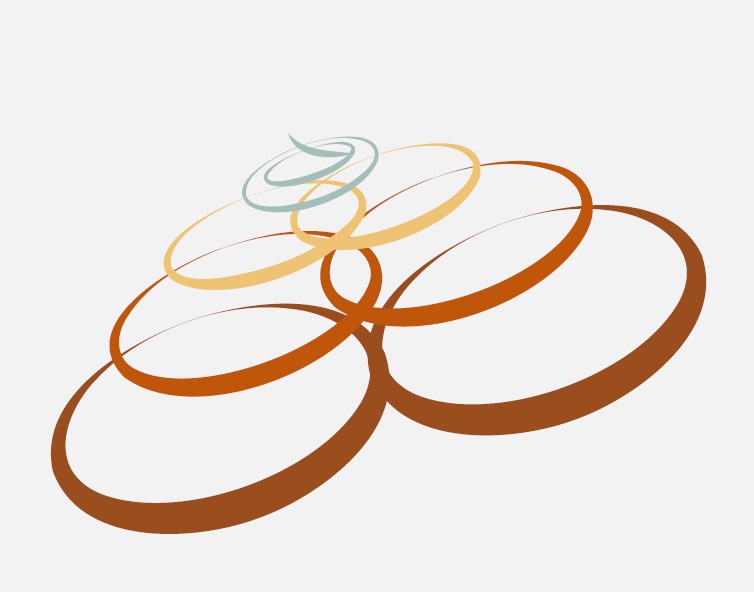The Enneagram In Depth

The idea of nine personality types links the Enneagram to the mysteries of many philosophical/religious traditions. It aligns with Buddhist psychology and Jewish mysticism through the Kabbalah. In the Christian mystical tradition, there are the stories of the Seven Deadly Sins and Two Shock Points, making nine stories. Each of us has one fundamental passion to resolve – anger, pride, vanity, envy, avarice, fear, gluttony, lust, and acedia (spiritual laziness or not knowing your true heart’s desire) – our personalities grow out of our one passion. For our purposes, the sins and the shock points are blind spots around which personality structure grows.
The model is fluid in that it accommodates our human differences as well as the non-static nature of human personality; each point on the diagram is only a partial representation of a person’s type as an individual’s personality is actually a unique combination of his type along with particular aspects of adjacent types on the diagram, which are termed “wings”.
The model also suggests that independent of personality there are three different types of people, each particularly concerned with one of the three deepest instinctual drives. These subtypes are called self-preserving, one-to-one and social. Each has its particular concerns: self-preserving with security, one-to-one with connection and social with belonging. As a consequence, there are three variations of each personality type, each of which looks somewhat different than the other.
The points on the diagram are also connected in a specific sequence indicating the likely behaviors we will exhibit when experiencing stress or security, e.g., the Perfectionist exhibits aspects of the Epicure when secure, and of the Romantic when stressed. These same lines are predictive of our likely pathway of development.
Emotional maturity increases peoples’ access to their gifts and strengths while a more limited emotional development tends to increase reactivity and produce destructive rather than constructive behaviors. (E.g. 8 Protectors – FDR and Saddam Hussein)
As a system of self-understanding, the Enneagram goes beyond other personality typologies, such as Myers-Briggs, in that it suggests our likely pathway of development. Its focus on core motivations and fundamental ways of paying attention, highlights “why” we do “what” we do versus simply addressing “how” we perceive the world. It uses a common vocabulary to describe each type, making it all the easier for us to remember and have an immediate sense of behavior and potential motivations when we say ‘Protector, Perfectionist, Performer…’
Head, Heart, and Belly Points
As stated in the overview, the Enneagram model is based on the observation that people experience the world in three significant ways, through feeling, thinking and sensing/doing and that these three ways correspond to three Centers that mediate our experiences – the Heart for feeling, the Head for thinking, and the Belly for sensing/doing. While people use all three centers, each Enneagram type prefers to dominantly use one of them for perceiving and responding to life.
HEART CENTER
If I am a Heart Center person, my fundamental perceptual mode is feeling in the service of whether you approve of me. I lose myself forward and out. I automatically create an image that I perceive you will like. When I am concerned with the approval of others, I lose my capacity to think and be discerning. Losing this capacity, I deceive myself that I am deceiving myself.
HEAD CENTER
If I am a Head Center person, my fundamental perceptual mode is thinking in the service of whether you are threatening to me. I lose myself back and in. I automatically create an adversary and a barrier for safety. When I am afraid there is danger, I lose my capacity to sense and act. Losing this capacity, I doubt the world and doubt my doubt.
BELLY CENTER
If I am a Belly Center person, my fundamental perceptual mode is sensing and doing in the service of distraction from not knowing my true agenda. I lose myself up and diffuse. Even though I am sensate, because I do not know my own heart’s desire, I am not fully embodied. Consequently, I automatically create the primacy of the other as a means to define me and a boundary to create a pseudo sense of self. When I forget myself, I lose my capacity to access what I feel and desire. Losing this capacity I forget that I have forgotten myself.
Knowing a person’s Enneagram point of view and subtype helps us to understand how they are likely to relate to the world by
Gaining more awareness of where they focus their attention and what is truly important to them.
Giving us nuanced information about how they are likely to be in relationship.
Providing with great accuracy the likely satisfactions and challenges that typically arise for each couple pairing.
Perhaps the most powerful application of the Enneagram is using it as a tool for spiritual growth. On a surface level, it helps us become aware of how we cope with the challenges that are too hard for us to handle; on a deeper level, it helps us become aware of the particular way we live out the roles we inevitably find ourselves in; and, on the deepest level, it helps us become aware of how we deny who we truly are. The Enneagram suggests that our personalities (and even our deepest ways of perceiving and our deepest instinctual drives) are in part compulsions that serve as protections from experiencing our deepest fears about ourselves. It reveals what these fears are. When we are able to become aware of, allow and accept these deepest fears about ourselves we are no longer identified with the small self, and we are able to realize and touch into our Essence.
Based on © Beckett/Hahn/Eckles All Rights Reserved
used w/ Permission

